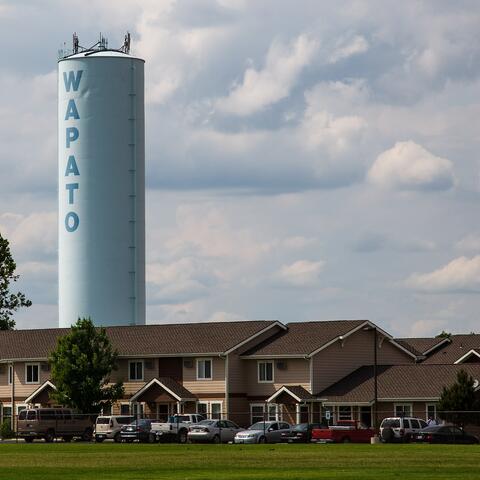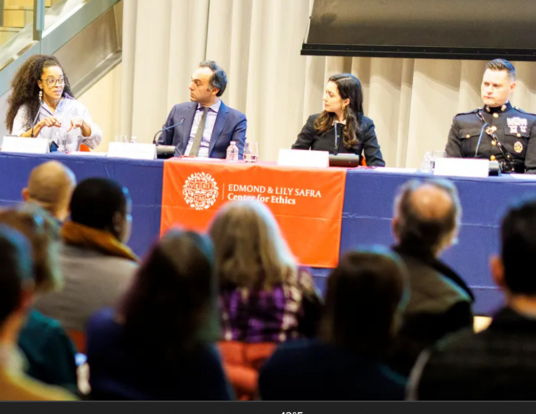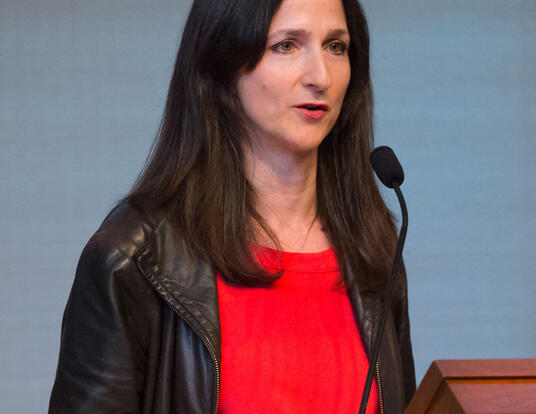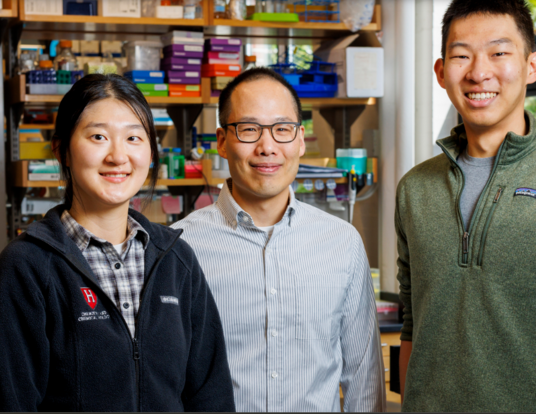Taking Microbes to the Extreme
Harvard Griffin GSAS Voices: Renee Richer, PhD ’04

Renee Richer is a professor at Duke Kunshan University based in China where she studies microbes as well as water, air, and soil quality. She discusses her exploration of bacterial communities that thrive in harsh conditions, her interest in extreme environments, and a tragedy that shifted her path from the study of animals to plants.
Toxic Deserts
I look at unique organisms in hyper-arid environments. In desert areas, there is something called biological soil crusts. These are a complex microbial community that help reduce soil erosion, improve air quality, affect plant germination and growth, and produce potent neurotoxins that can harm the nervous system.
The photosynthetic bacteria that produce toxins in the desert are the same bacteria that form harmful algae blooms in aquatic environments. We’ve always thought of photosynthetic bacteria as being a risk in aquatic environments, but my colleagues and I showed that there are also real risks in desert environments. We were the first to document the poisoning of a large mammal in the desert by bacterial neurotoxins, and recently, there was a mass die-off of elephants in Botswana that was linked to cyanobacterial toxins.
If a biological crust is intact, it does a lot of good. But when there is a disturbance in the environment that breaks up the crust, the bacteria and toxins can be aerosolized, and people or animals can be exposed if they inhale or ingest them. A colleague of mine brought her dog to a site in Qatar, for example, and it drank from the water above a biological soil crust. The dog exhibited signs of acute poisoning. It survived, but we realized that not all neurotoxin poisonings come from aquatic algal blooms; they can also come from biological soil crusts.
This is important because now we can look at our own exposure to these crusts in water sources and irrigation. If these toxins get in the water, they accumulate and biomagnify. When farmers irrigate crops with water that has these toxins in it, the toxins get incorporated into the plant matter and can’t be washed off. We need to find ways to protect ourselves and improve water quality, which is what I am working on now in China. There is a plethora of fascinating desert environments here, and I’m thrilled to engage with them and discover more about their ecosystems.
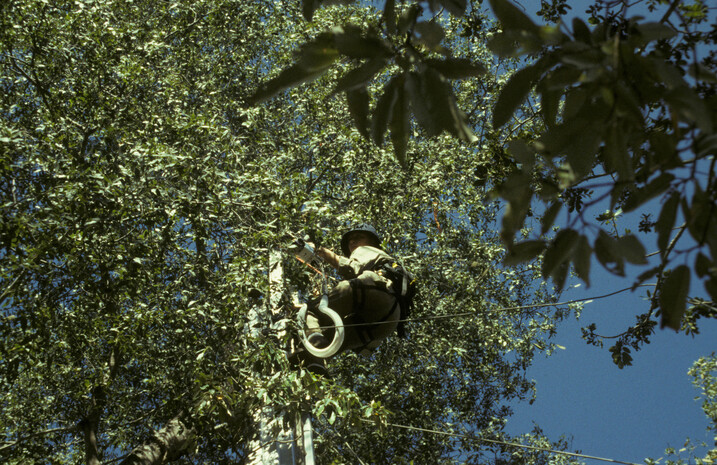
Harsh Conditions
I have always been interested in extreme environments. As a biologist, I think these environments are where you find the most interesting organisms that must exploit unique mechanisms—salt excretion, having no leaves, succulence—to survive under harsh conditions. This interest is what led me to work in the Middle East. I got pulled into microbial ecology because in the desert, the microbial community is so important. In desert environments, soil crusts can fix as much or more carbon than the plants and also fix nitrogen.
Being in the Middle East was so lovely. Maybe extreme environments foster camaraderie not only among researchers but also among the people living there. I first went to Lebanon in 1998 and when I arrived, I knew that was the part of the world where I wanted to work. I also briefly worked in Armenia, which was very interesting because it’s an incredibly small country in a biodiversity hotspot: mountains, high plateaus, and lots of different habitat types. Then I taught biology in Qatar. It’s been amazing to watch that country develop.
Grow Where You Are Planted
At Harvard Griffin GSAS, I had an experience unlike most. I came to work with [Charles P. Lyman, Professor of Biology] C. Richard Taylor, who was one of the world’s premier animal physiologists. The week I arrived, he died. I had been his student for only three or four days. It was devastating. I cried a lot and spent my time thinking, “What am I going to do? Do I reapply somewhere else? How do I start over?”
Then, suddenly, I was thrown into the world of plants, which has made my life what it is today. At the time, the only thing I knew about plants was that animals ate them. But there were amazing plant scientists in our department who offered me an academic home. They were asking the same types of questions I was asking about animals—particularly how they survive harsh conditions. I had the opportunity to explore how plants deal biologically with stressful situations and harsh environments, which were the questions I initially intended to ask about animals. A whole new world of biology opened up to me and I have never seen the world the same since. I am passionate about microbes and animals, but my real love is plants.
Get the Latest Updates
Join Our Newsletter
Subscribe to Colloquy Podcast
Simplecast


